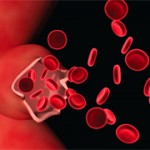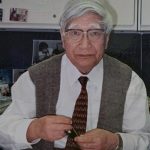
Dr. Tremoulet
Dr. Tremoulet notes that a lot of emerging data show that IVIG alone is insufficient in IVIG-resistant patients (i.e., those who do not adequately respond to IVIG treatment) and in those with coronary artery aneurysms. For example, adding glucocorticoids to IVIG therapy may lower the risk of developing coronary artery aneurysms and may decrease the risk of progression if coronary artery aneurysms are already present.8
The question of which patients should qualify as high risk is an area that needs more study. Risk scores developed to identify those at high risk of IVIG resistance in Japanese populations have included such factors as patient age and days of illness at treatment, as well as lab values, including aspartate aminotransferase (AST) and C-reactive protein (CRP).9 However, these have not proved very sensitive or specific in U.S. populations.
Other emerging data have identified factors that seem to increase the risk of coronary artery aneurysms, including some lab values, such as CRP, age (i.e., younger than 6 months) and information from echocardiograms.10
For the purposes of the guideline, patients younger than 6 months of age are considered at high risk for coronary artery aneurysms. On initial echocardiogram of the left anterior descending or right coronary artery, those with a Z-score of 2.5 or greater are also considered at high risk. (Note: The Z-score denotes the patient’s coronary artery dimensions in terms of the number of standard deviations from the mean adjusted for the patient’s body surface area.) However, clinicians should use their discretion and clinical skills to consider other features that may place patients at high risk for aneurysms.
“We wanted to give physicians latitude because we don’t have all the evidence cast in stone yet, and specific clinical scenarios can vary a lot,” Dr. Gorelik explains. “But when high-risk patients do have bad outcomes, these outcomes are very bad. We want to make treating physicians aware that there are high-risk patients and that they can be more aggressive in treating them.”
Dr. Tremoulet adds, “There is a very short window in which to treat these patients, and the risk of not treating them aggressively in that time window—especially if they are young or if they have coronary artery abnormalities on their first echo—outweighs any risks of the anti-inflammatory medications being given.”
We don’t yet know which additional anti-inflammatory therapies may be best in this context—whether glucocorticoids or some other specific immunomodulatory therapy, such as infliximab, anakinra or cyclosporine. “There is clinical equipoise as to what we should use, but I think getting out the message that we should use something is really important,” says Dr. Tremoulet.
Strong Recommendation: Patients with incomplete Kawasaki disease should be treated with IVIG at time of diagnosis instead of delaying treatment until day 10.
Patients with “incomplete” or “atypical” Kawasaki disease have suggestive features but do not fully meet the disease criteria. “You want to be able to have latitude to err on the side of treatment in incomplete Kawasaki disease because the consequences of missing the diagnosis are quite a lot more serious than giving a patient IVIG unnecessarily,” says Dr. Gorelik.
Initial studies on Kawasaki disease from the 1980s arbitrarily used 10 days as the period at which patients were treated or not treated with IVIG. “That 10-day period became fixed in some people’s minds,” says Dr. Gorelik.
“What we wanted to say in this guideline was that 10 days is arbitrary. Once you think a patient has Kawasaki—whether it’s four, five or seven days after symptoms began—you treat them at that moment; and conversely, if you have a patient who is 12 or 14 days out, you still treat them because there are more nuance and complexity in this disease than just following a strict set of guidelines.”
Dr. Tremoulet expands the context for this more broadly. “A myth to be dispelled about Kawasaki disease is that many people think about it only being diagnosed after the fifth day of fever and illness. But you can have complete clinical criteria before that—it could be as early as day two or three of fever.”
She also points out that with PCR tests now available, it is now possible to rule out other possibilities on the differential diagnosis, such as adenovirus, in a much shorter time frame than in the past.
Strong Recommendation: For children with suspected incomplete Kawasaki disease and fever or with unexplained shock physiology, obtain an echocardiogram with coronary artery measurements.
This recommendation continues the general trend throughout the guideline urging clinicians to promptly diagnose and treat Kawasaki disease. By not missing unusual presentations of the disease, physicians can reduce the risk of serious complications.
Strong Recommendation: Using aspirin is recommended over not using aspirin in acute Kawasaki disease.
Aspirin should be utilized as a low-cost intervention with the potential to inhibit platelet activity and decrease the risk of complications, such as coronary artery thrombosis.
Before Kawasaki disease was treated with IVIG, the standard treatment was high-dose aspirin. High-dose aspirin has continued to be used as an add-on to IVIG treatment to reduce inflammation and prevent thrombosis. However, little evidence suggests that high-dose aspirin is more beneficial than low-dose aspirin in this setting. This current guideline acknowledges this and notes the dose should be up to the prescribing physician.
Conditional Recommendation: For patients with persistent fevers after initial treatment with IVIG, a second course of IVIG is recommended over glucocorticoids.
This conditional recommendation reflects the standard of care. However, this is another evolving area that may change; secondary treatment for patients not responding to IVIG has not been compared in direct trials published to date.
It is known that repeated doses of IVIG may place some patients at risk of hemolytic anemia. Thus, it is recommended that patients with risk factors for this, such as those with non-O blood type, receive glucocorticoid therapy or immunomodulatory therapy such as infliximab instead of repeated doses of IVIG.11
Strong Recommendations: 1) For patients with Kawasaki and suspected macrophage activation syndrome (MAS), treat with IVIG for Kawasaki disease but also use additional agents to treat MAS. 2) For children with unexplained MAS, obtain an echocardiogram with coronary artery measurements.
One serious and potentially underrecognized complication of Kawasaki disease is MAS, a form of secondary hemophagocytic lymphohistiocytosis (HLH) causing unremitting, dangerous inflammation, that may present with splenomegaly, elevated ferritin, thrombocytopenia and other signs. Patients require treatments for both conditions with appropriate therapy to reduce the risk of mortality: IVIG for Kawasaki disease; anakinra and glucocorticoids for MAS.
Similarly, for a child with MAS triggered by no clear cause, clinicians should use an echocardiogram to help identify Kawasaki as a possible underlying trigger.
Moving Forward
Discussing overarching themes of the guideline, Dr. Gorelik notes, “Traditionally, Kawasaki disease has been thought of as a very cookbook kind of medicine: You get patients who meet specific criteria; you treat them with IVIG, and that is the end of the story. In this guideline, we acknowledge that there are nuances, that some patients are different from others, so the practicing physician should be more aggressive with therapy in some cases.”
Clinicians will need to interpret the recommendations in light of data that will continue to emerge. For example, results are expected shortly from the phase 3 Kawasaki Disease Comparative Effectiveness Trial (KIDCARE), which studied repeat IVIG vs. infliximab in Kawasaki patients unresponsive to

